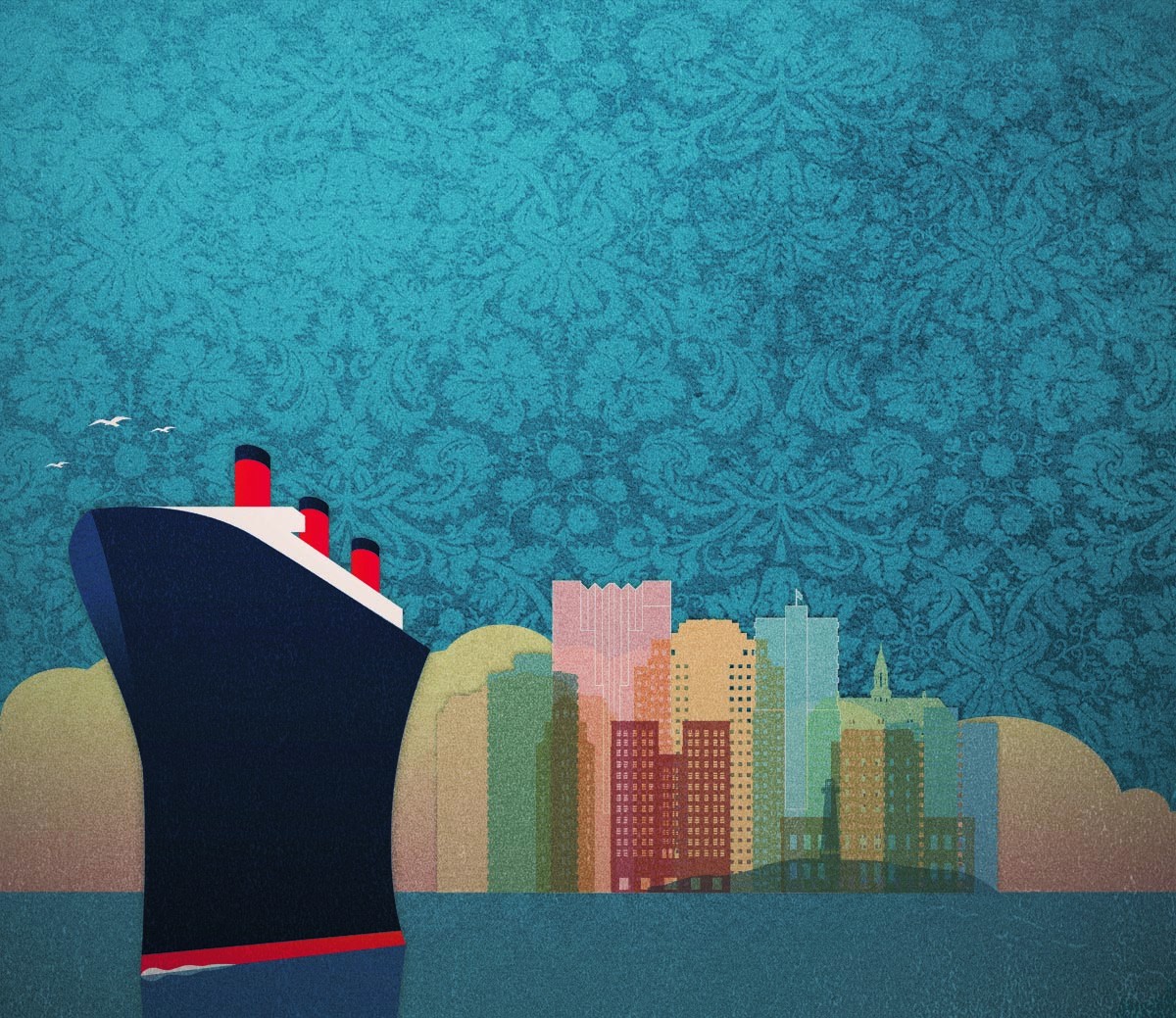
THE PAST
In 1888, the newly minted seaside town of Long Beach, California, lost its biggest and ostensibly only tourist attraction to a tragic fire. The drolly named Long Beach Hotel was a behemoth of Victorian architecture. Built on a bluff that is now the site of the recently decommissioned Long Beach City Hall and library, the five-story structure included a dining hall with a massive bay window so guests could admire the breakwater-free Pacific Ocean during their stay. On Nov. 8, 1888, flames engulfed the building.
It was a victimless blaze, save for the pride of the brand-new city. Although there was no way to know it at the time, the young city’s best days were still to come. Long Beach has a long and proud history of boosterism, some projects more successful than others. Over the past century, the city has hosted a (since-closed) U.S. Navy base, an international port, the annual Grand Prix Formula One and stock-car races, the legendary (and long-gone) Pike amusement park, and, of course, Alex’s Bar.
Long Beach’s greatest achievement in international self-marketing took place in 1967, when a grand British ocean liner trailed by thousands of sailing ships and motorized watercraft entered the bay. The large ship would eventually become the most iconic landmark in Long Beach, as well as perhaps the most interesting hotel destination in Southern California. The RMS Queen Mary had found its new, hopefully final home.
The grand dame of ocean liners’ Long Beach Jubilee began on Dec. 9. But to properly tell the story, one must begin at the end of her time at sea. Captain John Treasure Jones had been at the helm of the Queen Mary for only three of her 31 years at sea when Cunard, the British ship-building dynasty, sold it to Long Beach for $3.45 million in 1967.
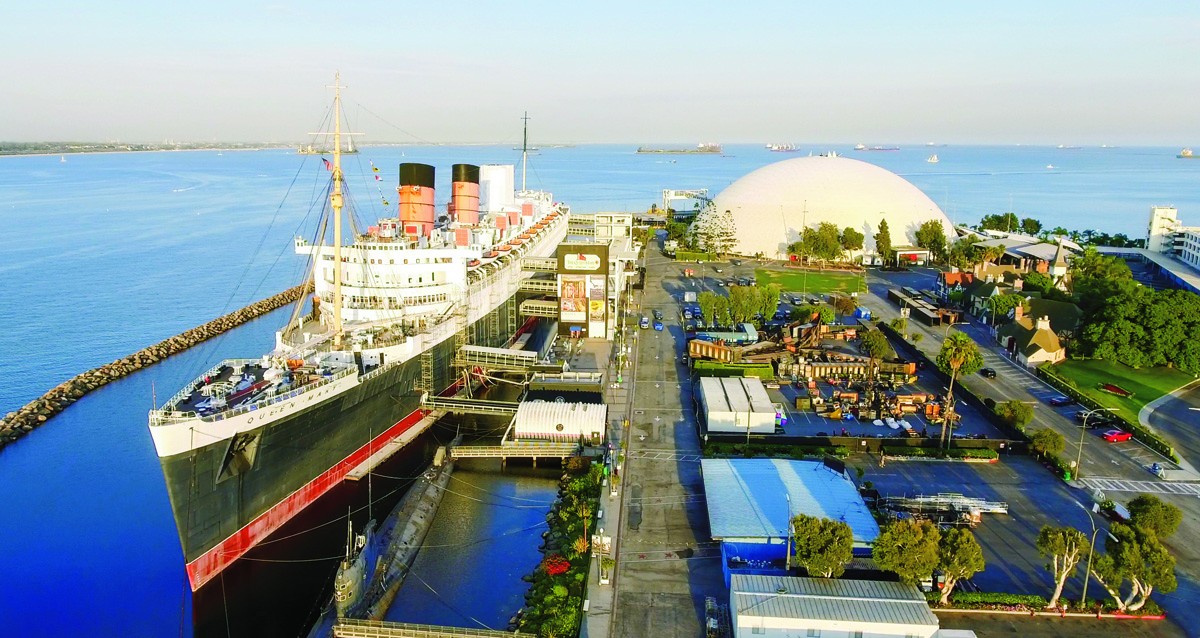
Jones had spent 47 years of his life at sea. In 1965, he had the dubious distinction of steering another of Cunard’s grand ocean liners, the RMS Mauretania, to her end, a Scottish scrapyard. It was a memory that would forever haunt him. And here he was, just two short years later, once again at the helm on the final voyage of a grand British vessel. That was enough “final voyages” for one career; Jones would retire once the Queen Mary reached her final mooring halfway across the world. The good captain was going down with his ship.
Accounts of the Queen‘s final voyage in the autumn of 1967 were peppered with melancholia, but Jones kept the optimism afloat. He was pleased the “First Queen of the Atlantic” would escape the scrapyard fate that befell so many vessels from the Golden Age of ocean liner travel. She would go on to live a new life as a hotel, convention center and maritime museum in sunny Southern California.
A Los Angeles Times article published the day after the Queen Mary left Southampton for the final time dismissed her as “Long Beach’s answer to Disneyland.” The city’s main tourist attraction, the Pike, a once-bustling seaside fun zone that had become notoriously seedy over the years, struggled to compete with the novel allure of Disneyland when it opened in Anaheim in 1955 and as Knott’s Berry Farm grew as an amusement park in neighboring Buena Park.
Luxury ocean travel also fell victim to changing tides of tourism. Jet travel was de rigueur for travelers of the day; it was faster, more affordable, new and exciting. The liners of old, once among the fastest manmade forces found on Earth, struggled to keep up with the unforgiving movement of time.
As tourism declined in Long Beach, the city’s oil economy boomed. The oil-rich seaport was in a prime spot to triumph in a bidding war when the Queen Mary and her sister ship, the RMS Queen Elizabeth, hit the auction block in 1967. The city outbid contenders including New York and Philadelphia.
To build a maritime museum in Long Beach, $8 million in Tideland oil funds had been put aside. The Queen Mary, renovated and retrofitted, would cost less than that, according to early projections. “Not since Manhattan went for a bag of beads has anyone turned this good a deal,” jested one LA Times article.
The news was announced with much fanfare locally and with blanket news coverage in both her birthplace and final destination. Joseph Linesch, a Long Beach environmental planner who helped orchestrate the ship’s new home, said the Queen Mary and the surrounding attractions “will be a significant decision in making Long Beach the ‘Riviera of the West.'” He added, “It would be inappropriate if she did not have a setting fit for a queen.”
No time was wasted in sending her off to her new home. Despite protests from Cunard, the city insisted on selling tickets to her grand last hurrah, which would help to recoup the $600,000 cost of sending her from Southampton, England, to California. The Queen Mary was a fine vessel to take for day trips across the Pond, but a 39-day trip halfway around the world? Cunard was wary of how the old girl would fare. But her new owners persisted.
[
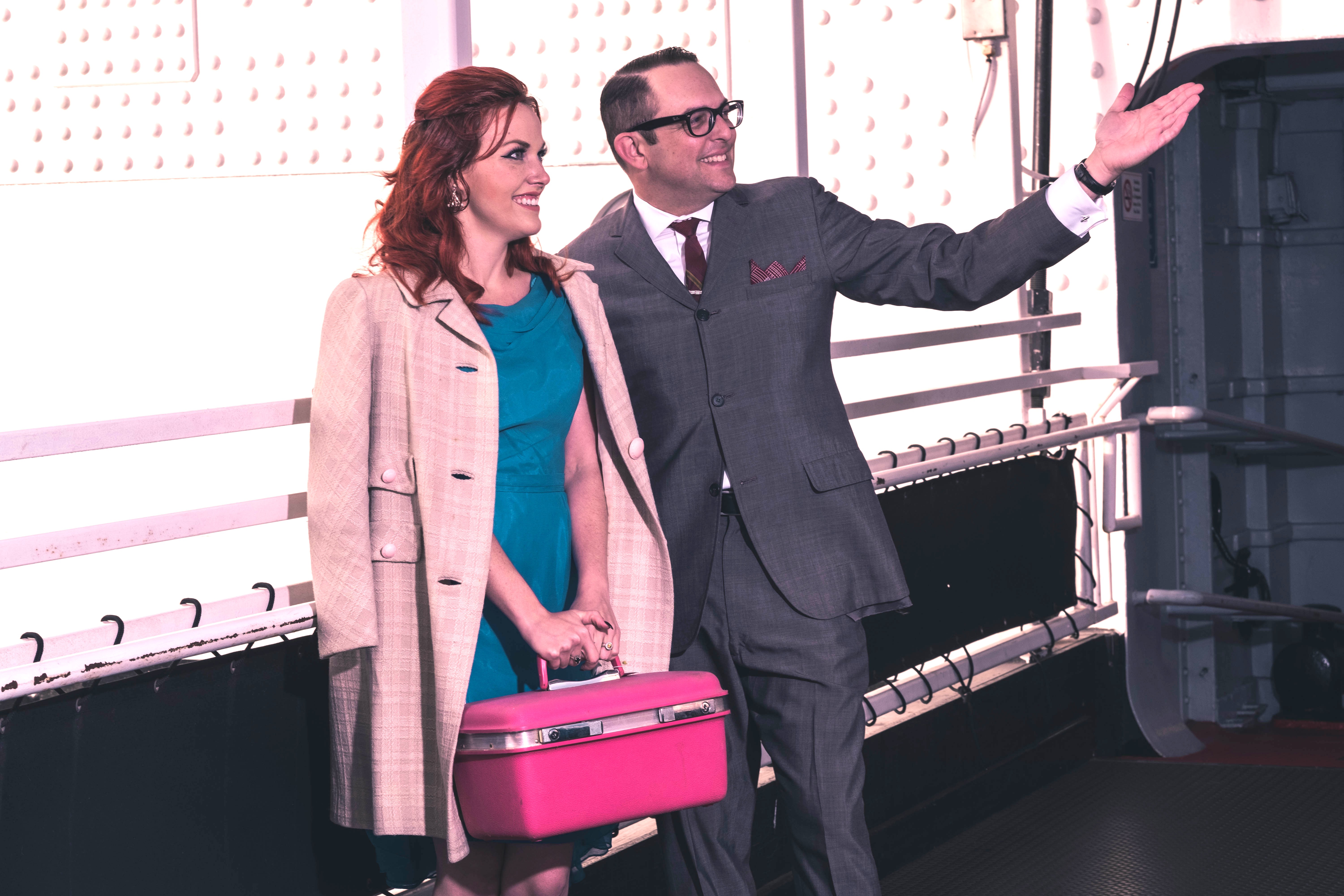
The final voyage, which launched from Southampton on Halloween 1967, was sold out. The cruise was packed with mostly wealthy retirees from Southern California who paid between $1,200 and $9,000 to be aboard for her 1,001st trip. “‘The average age must be at least 70,’ sighed one of the disappointed young swingers aboard,” mused one LA Times reporter. “There can’t have been a white-rinsed head left in California.”
The voyage sought to re-create the opulence of her days at sea during the 1930s and 1940s; the Queen Mary took a break during World War II to serve as transatlantic transportation for the Allies, then resumed in the 1950s. A true luxury liner, she transported royalty, heads of state, celebrities and socialites from Winston Churchill to Clark Gable to Liberace.
In her heydey, passengers from first class to cabin were treated to state-of-the-art Deco-era excess and fine British hospitality. They could nosh in the Verandah Grill or first-class dining room, enjoying meals on par with any three-Michelin-starred French restaurant. The gorgeous Royal Salon showed the latest films. And, of course, there was the dancing; set to live bands, the soirees would last long into the night.
More than a decade removed from the ship’s golden days, the final voyage was not all glitz and glamour. Air conditioning was still in its infancy when the ship was built in the 1930s, so the Queen Mary had none. Two trips past the equator brutalized passengers and crew with relentless, grueling heat. One salad chef—56-year-old Lock Horsborough, fondly nicknamed “Lobster” for his alcoholic blush—succumbed to the heat and died near Rio. He was buried at sea.
Too big to fit in the Panama Canal, the ship made history by being the largest vessel to round Cape Horn. On the way south, a woman was ejected from the ship in Rio for allegedly soliciting prostitution, sending tongues wagging about the decline of the clientele.
“[The Queen Mary] has deteriorated badly,” Charles Horner told the LA Times. He had served as a lounge steward during the ship’s maiden voyage in 1936. “When she first ran the Atlantic, she was a class ship. I mean really tops. The passengers were rich, and the stewards were experienced men. . . . Today, the young men we’ve got in the crew—it’s not like in the old days. Just riff-raff, some of them.”
Whether riff-raff or retiree (or both), the passengers were determined to have fun. The drinks flowed freely, and guests made sure to pick up a little extra at each stop to save a buck or two onboard. “They come up the gangplank like ants, carrying 50 times their own weight, lugging arms full of booze and souvenirs,” reported the Times. “You’d imagine from the ecstasy shining in their eyes that they’d decided they could recoup their travel expenses in liquor savings.”
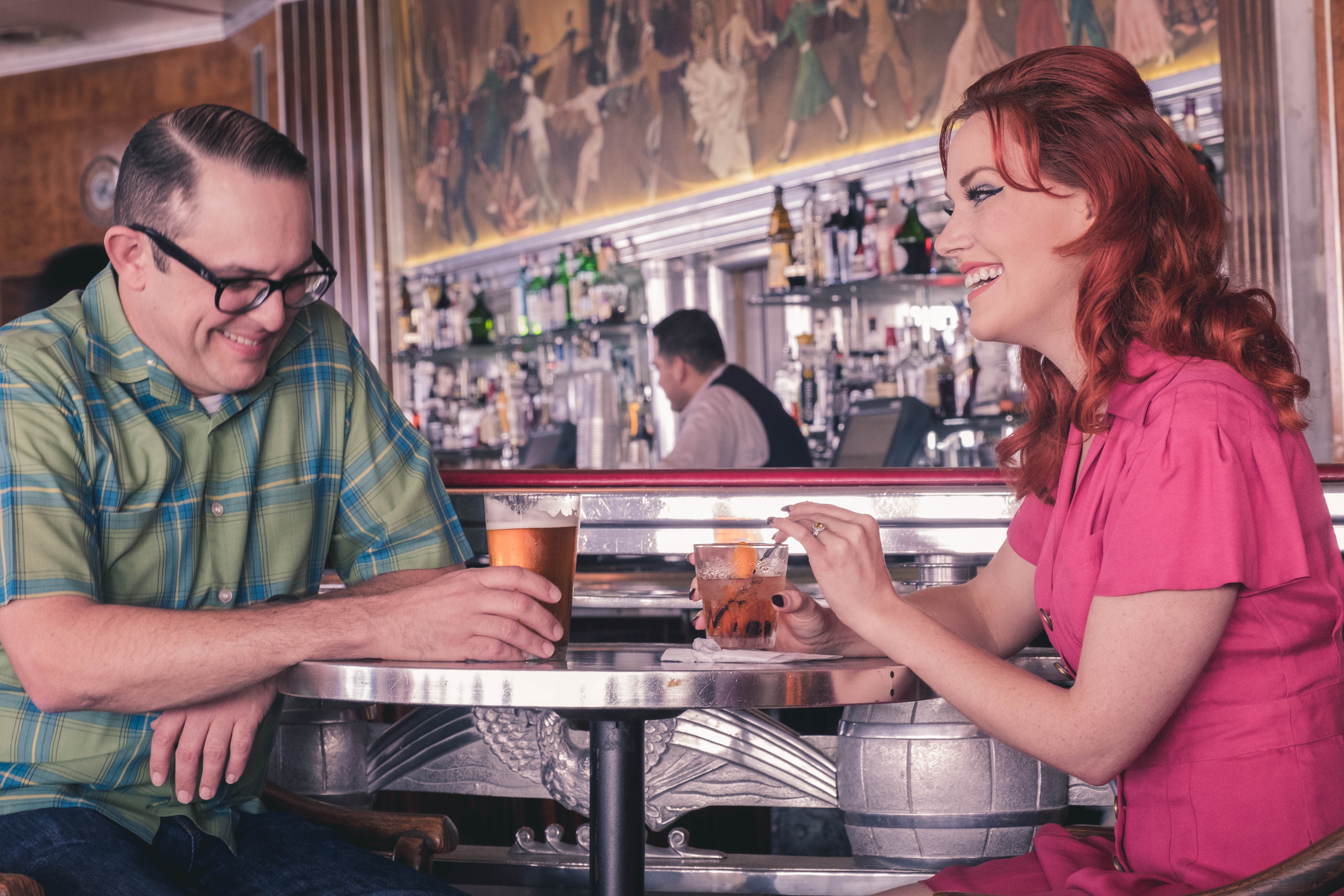
Seventeen days into the trip, the Times noted, there was a large costume party on the Promenade Deck, with “elderly ladies showing too much leg and bosom” and “more Arabs, bed sheets being readily available, than you could shake an eyepatch at.”
As the ship neared the end of its 14,559-mile journey, any unpleasantries those onboard experienced began to wash away. On Dec. 8, the penultimate day of the journey, a Douglas DC-9 flew over and dropped thousands of carnations on her decks, just as another jet had done on her maiden voyage. That evening, the Main Lounge was decorated with tinsel and glitter, and passengers, crew and captain made sure to give the old girl one final night to remember. Reports say revelers partied well into the next morning.
On Dec. 9, the Queen Mary sailed into San Diego. An armada of sea vessels big and small began to join her trip north. The Coast Guard was called to help keep order. Jones steered her within 2 miles of the coast of Newport Beach so Southern Californians could get a good look.
As she approached Long Beach, some 5,000 vessels in tow, passengers started throwing “souvenirs” into the harbor—deck chairs, silverware, anything that wasn’t bolted down. The ship arrived to Pier E just before noon. At 12:16 p.m., Jones entered the engine room and sent a bittersweet telegram marking the successful vovage. The message contained just three words: “Finished with Engines.”
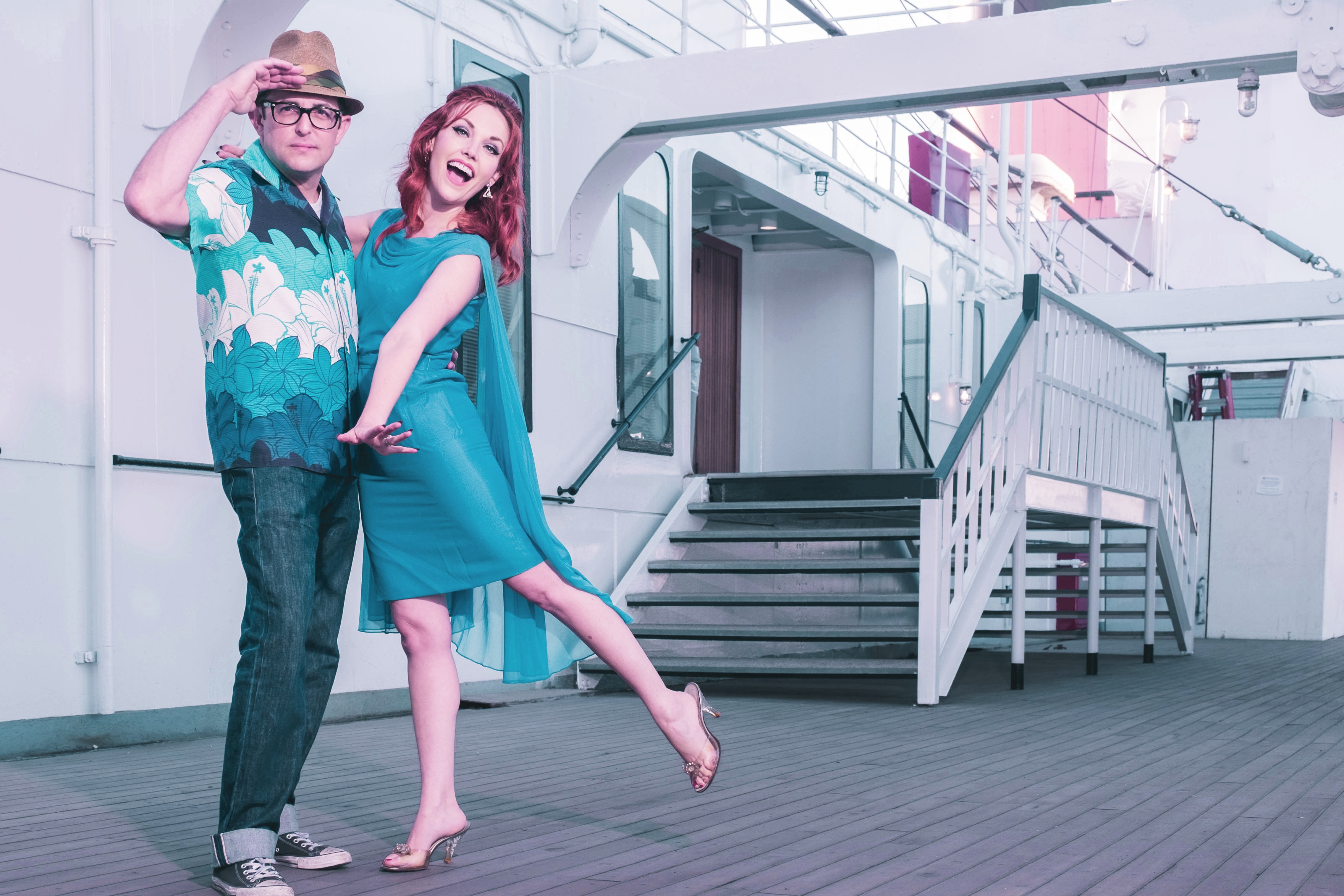
THE PRESENT
After four years of overhaul, the Queen Mary partially opened to the public in May 1971. In December of that year, Jacques Cousteau’s “Museum of the Sea” opened onboard. The diving icon helped to design the exhibit, but it opened with just a quarter of the proposed attractions. Low ticket sales shuttered the museum a decade later. Brian Luallen, the Queen Mary‘s current director of events and entertainment, says that the shift to events-based tourism was a natural choice.
[
“There’s always been a grand tradition of entertainment here on the ship,” he explains. “It truly was a spectacular party back in the day. We kind of evoke those qualities today with diverse programming that would have been comparable with what you would have experienced as a first-class passenger sailing on the ship in her golden years.”
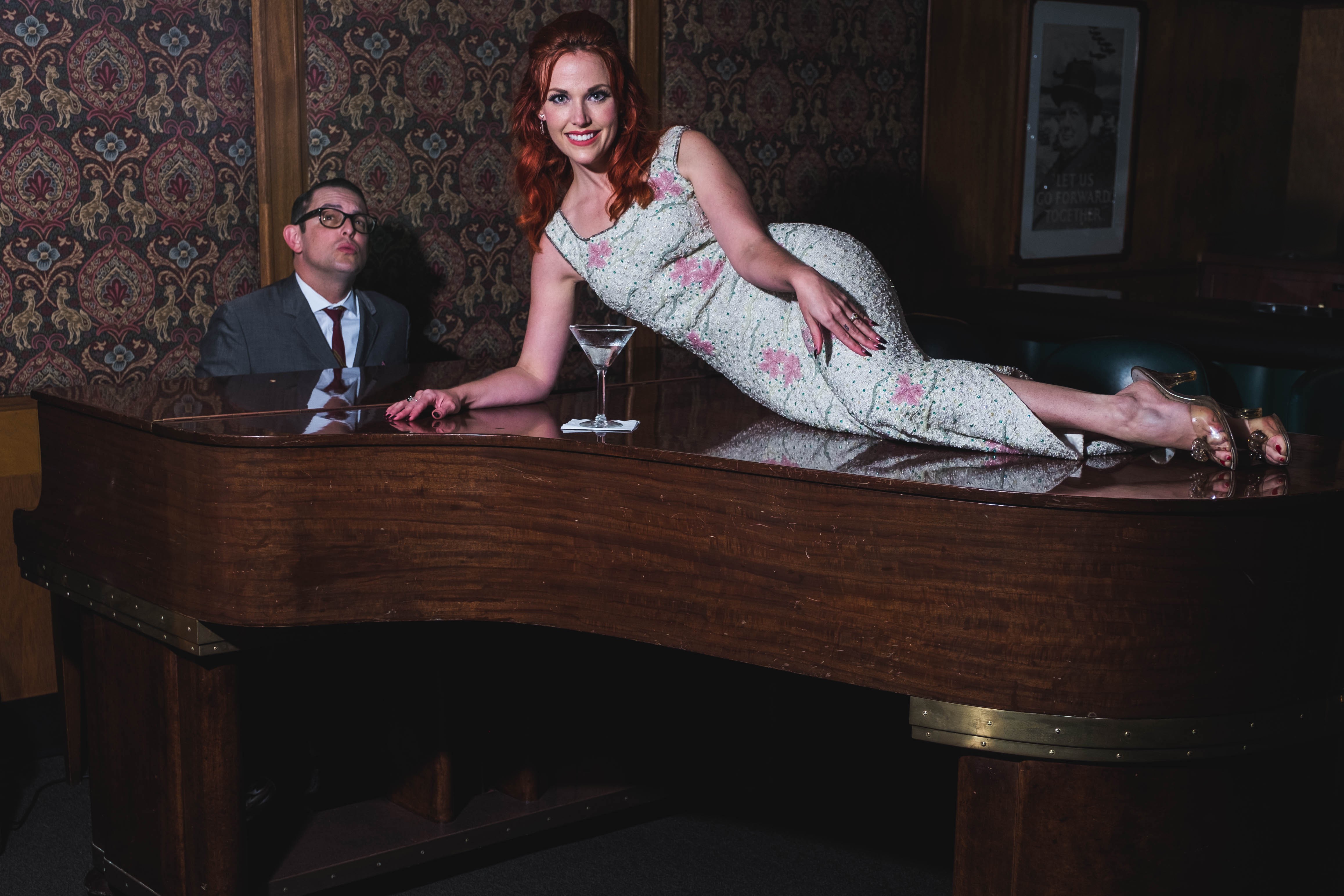
The historic ship has served as a mecca for history-heads and vintage-lovers who are hungry for a direct portal back to the ’30s and ’40s. The Art Deco Society of Los Angeles hosted the Art Deco Festival there for many years. The event lives on under new management, attracting period-perfect re-enactors and enthusiasts for a long weekend of informative lectures, era-appropriate libations and a defacto Deco fashion show that can’t be beat.
The grounds around the Queen Mary have also played host to many large-scale music festivals. Most notably was Ink-N-Iron, a legendary festival that brought iconic tattoo artists from all over the world alongside top-tier punk and garage acts such as Iggy & the Stooges, the Sonics, the Buzzcocks, and the Damned. (The event, which started in 2002, relocated to Nashville in 2015, then went bankrupt.)
Other large-scale music festivals such as Summertime In the LBC in August appealed to a city rich in hip-hop history. Genre giants YG and Wu-Tang brought with them droves of young crowds. On Dec. 5, big-time concert promoter Goldenvoice (of Coachella fame) announced a two-year contract with Urban Commons, the leaseholder of the Queen Mary. The joint venture aims to bring three to four large festivals per year to the Queen Mary Waterfront Events Park, plus several smaller-scale events onboard the ship.
Signature events such as the annual ScotsFestival, Dark Harbor halloween haunt, and winter wonderland Chill draw diverse crowds each year. Luallen says the Queen Mary is just warming up her engines as a destination for can’t-miss music festivals and more. Her role as a venue, more than an icon or hotel, might just be what keeps her afloat.
The notion that the Queen Mary‘s glory days are behind her has been around long before anyone ever dreamed of her coming to Long Beach. Thirty-one years of wear and tear from both harsh sea air and heavy foot traffic had taken their toll. As the ocean liner’s Atlantic crossing ticket sales declined, so did her maintenance. A large feature story in the LA Times‘ long-gone Sunday magazine West, published the day after the Queen Mary‘s arrival in Long Beach, likened the ship to an aging Gloria Swanson as washed-up film star Norma Desmond in Sunset Boulevard. Still clutching to her old diamonds and dreaming of more glamorous days gone by, eagerly awaiting the comeback that would ultimately never come.
“It’s hard to evaluate the Queen today,” the 1967 article stated. “According to the experts hired by Long Beach to check her out, she’s in fine operating order. But topside, it’s not always so easy to spot her former dazzle. Up close, crow’s feet and wrinkles show. . . . It looks gauche, overblown; she’s high style gone seedy.”
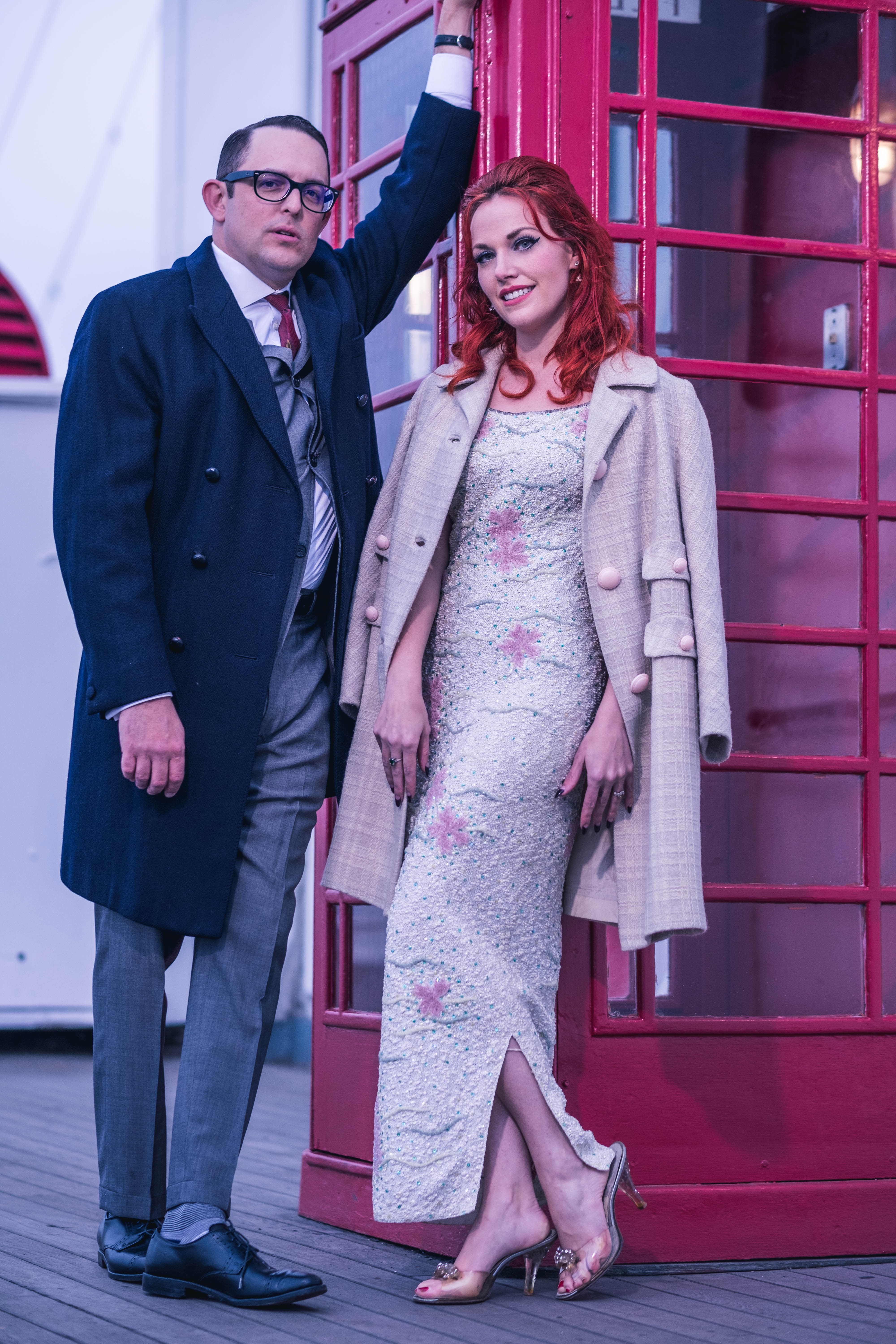
The undeniable beauty and romance of the vessel has allured a revolving door of would-be knights in shining armour gallantly coming to the aid of the distressed Queen over the years. The nostalgia and reverence she holds is what saved her from the scrapyard fate that befell most other grand liners of her time in the jet age.
One such cavalier was Jack Wrather, a Texas oil boy gone Hollywood producer, best known for his work on the Lone Ranger TV show and owner of several lucrative properties across Southern California including the Disneyland Hotel and Balboa Bay Club. Wrather was said to have fallen in love with the ship while he and his second wife, Bonita Granville, sailed upon her across the Atlantic several times.
In 1980, Queen Mary operations went into upheaval as Hyatt Hotels pulled out of the hotel-operating duties. Wrather Corporation came in the same year and signed a 66-year lease to manage the Queen Mary and surrounding lands. In 1983, Wrather brought pilot Howard Hughes’ Hughes H-4 Hercules, more commonly known as the Spruce Goose, to the Queen Mary grounds. The flying boat, housed in the now-iconic white geodesic dome, and the ship became sister attractions.
Wrather played a similar benefactor role in the building of the Disneyland Hotel in the early to mid-1950s. Walt Disney was overextended financially from building the unprecedented Anaheim theme park. The area surrounding what would become Disneyland was then mostly fruit groves and dirt lots and devoid of the upscale hotels that now make up the Anaheim Resort. Disney turned to buddy Wrather to finance and build a nearby hotel. Wrather initially declined to fund such a pipe dream, but a counteroffer from Uncle Walt giving Wrather a 99-year lease on the property and rights to use the Disney name on any subsequent hotels Wrather built in Southern California sweetened the pot enough for the two to reach an agreement.
[
Disney tried for years to buy the hotel once they could afford it, but Wrather refused. It wasn’t until some three decades later, after Wrather died and his corporation fell on financial hardship, that Disney was able to obtain the Disneyland Hotel in a $152 million buyout in 1988. The caveat? Disney had to take on Wrather’s other properties, including the management of the Queen Mary and Spruce Goose.
The Mouse tried to make a go of the Queen Mary and its waterfront properties. The company had big plans for Port Disney, which was set to include the DisneySea nautical theme park, several new hotels, and a shopping and entertainment district. Eventually, the city of Anaheim was able to entice Disney’s development dollars better than the city of Long Beach, and plans for Disneyland-By-the-Sea were scrapped in 1991. Disney pulled anchor in Long Beach to begin work on a “Westcott” development in Anaheim, which would eventually evolve into Downtown Disney, the Grand Californian Hotel and, of course, California Adventure. DisneySea would be built in 2001 in Tokyo, with its own grand ocean liner re-creation, the S.S. Columbia, which features three familiar funnels with a knowingly close to Cunard red paint job.
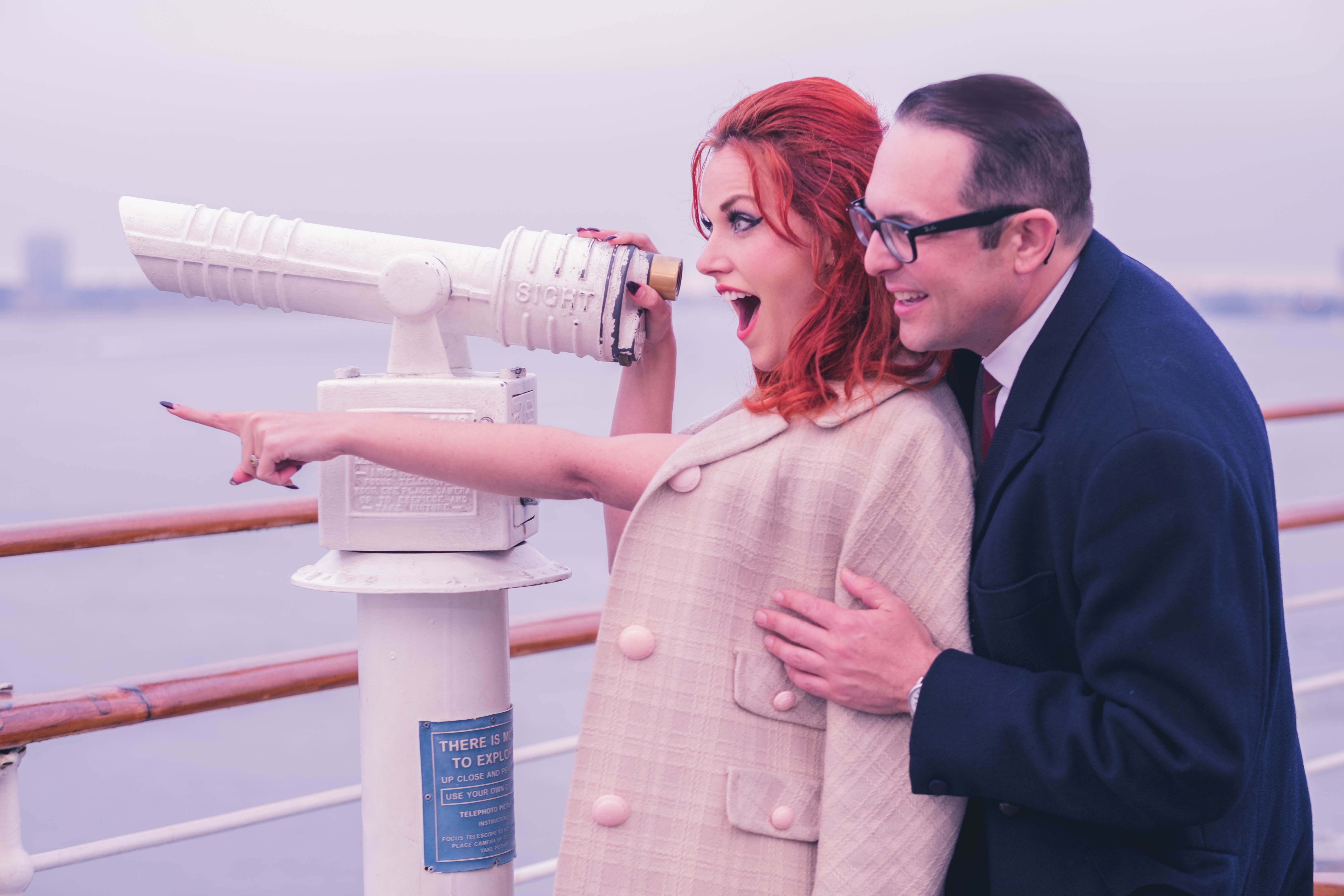
Disney pulled out of port in 1992, forcibly closing the Hotel Queen Mary and three days later sending the Spruce Goose off to its new and current home in Oregon. By New Year’s Eve, the Queen Mary had closed to the public completely. Joseph F. Prevratil, president and CEO of RMS Foundation Inc., took over operations the following year, and the Queen Mary reopened incrementally.
A 2004 OC Weekly feature story by Dave Wielenga, titled “Queen Scary,” included an interview with Prevratil, who had been at the helm for 10 straight years at that point (he had previously run the ship from 1982 to 1988 with the Wrather Corp.). The article had a familiar tone and posed the question that seems to have been asked since the ship arrived in California 50 years ago: What is to be done with this Queen Mary?
“City Hall is terribly frightened of the Queen Mary,” RMS Foundation Inc. financier Dr. Robert Gumbiner told Wielenga. “Whatever mayor, city council or city manager is in office at the time, they are frightened that the Queen Mary will somehow turn into a rotting hulk on their watch. As long as they can avoid that, they will do anything.” (Long Beach Mayor Robert Garcia and the city’s media-relations team did not respond to the Weekly‘s recent requests for interviews.)
More than a decade later, the ship’s existential dilemma now has an exclamation point. A marine survey conducted in 2015 by naval architects and vessel experts at the behest of city officials and first reported in the Long Beach Press-Telegram in March of this year came to a damning conclusion: Years of neglect had severely sabotaged the vessel’s structural integrity, and if drastic restoration action was not taken immediately, the building would flood, collapse—or both.
As the story made international headlines, the report rocked the Queen Mary‘s reputation and brought a lot of heat to the city, new leaseholder Urban Commons and Evolution Hospitality, the San Clemente-based luxury hotel conglomerate that runs the hotel element of the ship. (Evolution Hospitality did not respond to our interview request for this story.)
Some of the most heated cries of outrage came from Scotland, where she was built. “Conservationists say the way the ship has been treated is ‘criminal’ and that if the legacy of ‘irresponsible’ custodianship is any guide, her demise is ‘inevitable,'” reported The Scotsman. “Politicians in Scotland have led calls for an international fundraising campaign to restore the former Cunard liner and urged Prime Minister Theresa May to put pressure on the U.S. government to step in.”
The city’s economic- and property-development director, John Keisler, responded to public outcry in an interview with the LA Times, saying $23 million had been approved to address the most urgent repairs, with $12 million worth of repairs expected to be completed in 2017. But the city’s repair budget is just a drop in the Pacific Ocean compared to the projected $289 million it would take to make the experts’ recommended repairs. It’s a sum that makes some question if she’s worth saving at all.
[
Even in 1967, a Times journalist had to pose the question. “It’s hard to decide in one’s own mind what the Queen deserves. How do you reward former glory and wartime heroism, when in a jet age the ship herself has become redundant?”
Shortly after the ship hit the fan this spring, a new general manager was brought aboard, Stephen Sowards. He has a 25-year hospitality résumé that includes the Marriott and Ritz-Carlton and also has a message for naysayers. “I would say, kindly, ‘We’re going to make you eat your words,'” he says. “The city of Long Beach is engaged with the Queen again to make her the great ship that she once was and always will be.”
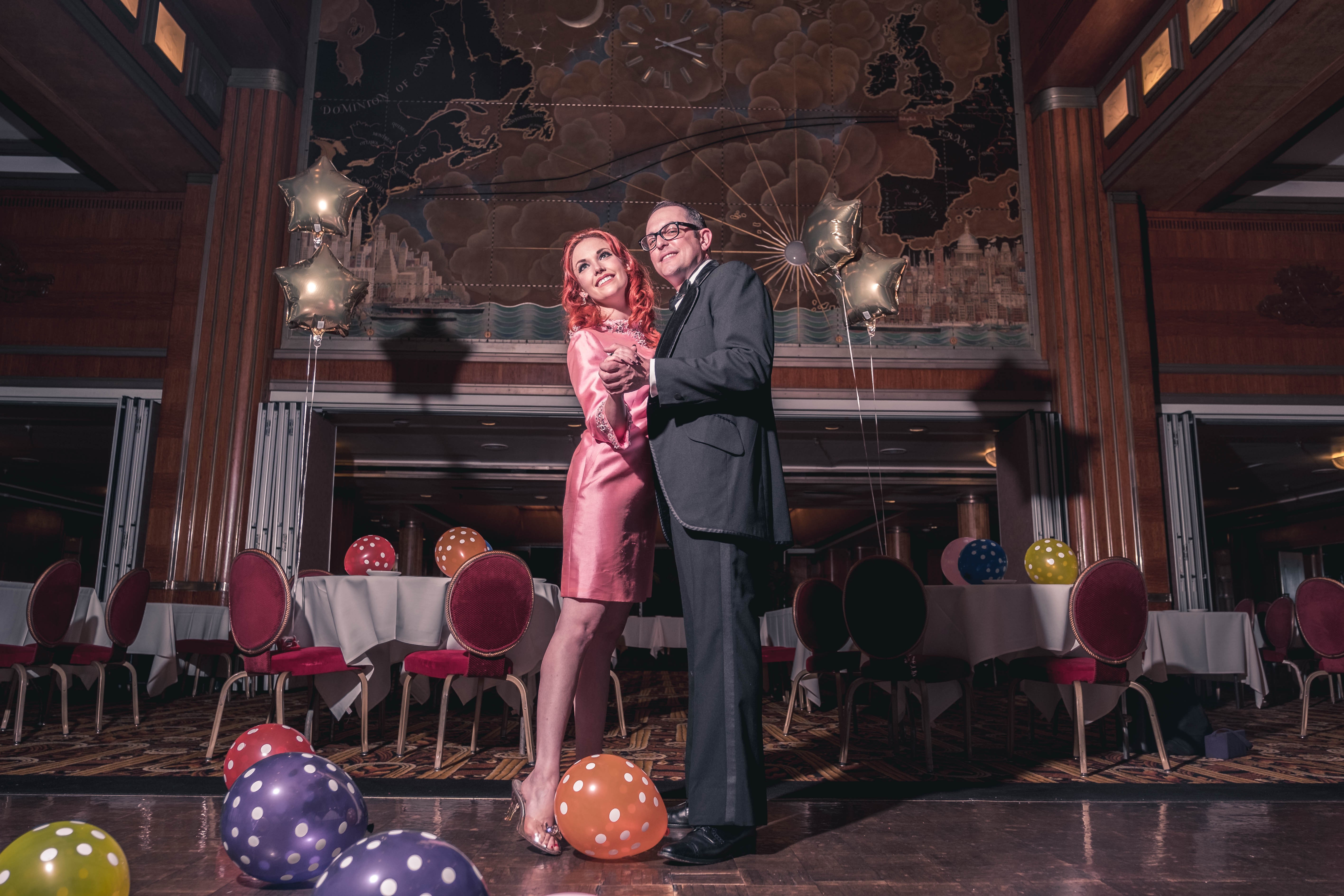
THE FUTURE
On a recent November evening, just before nightfall, voices of men yelling to one another from somewhere high above could be heard from the parking lot. Scaffolding and white curtains were visible on the decks and up near the Queen Mary‘s iconic trio of smokestacks—one of which boasted a fresh coat of paint. At the flip of a switch, the middle smokestack suddenly lit up, illuminated with tiny white lights strung like new pearls.
Crews were hard at work tearing down one signature event, the Halloween-themed Dark Harbor, to make way for another, Chill. A stone’s throw from the ship, other crews were setting up for a new two-day music and taco festival, Tropicalia, which was “beyond sold out.”
That day’s buzz of construction and event set-up, plus a full parking lot, all pointed to the promise of the proposed Queen Mary Island, whose preliminary plans include an amphitheater, shopping center and Ferris wheel. The $250 million investment seeks to turn the ship and its surrounding areas into what Long Beach city planners had in mind 50 years ago: a must-see entertainment and tourist destination. It’s a venture understandably taken with a grain of sea salt, given how many companies and bureaucrats have claimed they’d be the ones to turn the tides, only to abandon ship.
The Queen is ingrained in the identity of Long Beach, argues Sowards, adding that every time he visits the city, he meets people who worked at the Queen Mary. “I want the city of Long Beach to engage with this ship because the ship belongs to the city of Long Beach,” he says. “Every day, they wake up across that bay [and] look at this wonderful icon we have here.”
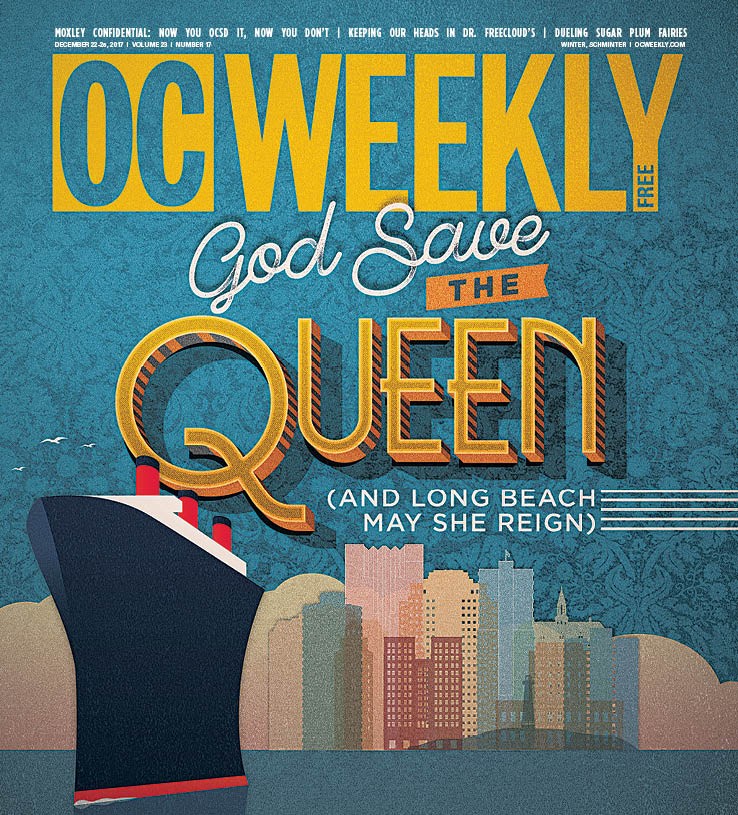
The Queen Mary has now spent more time docked in Southern California as a building than she spent at sea. Ironically, she’s now neighbors with a Carnival Cruise Ship Terminal. (Carnival purchased the Cunard Line in 1998.)
In her 87 years of existence, the Queen Mary has survived the Great Depression, World War II and a cataclysmic collision with the HMS Curacoa. She escaped the scrapyard and even Adolf Hitler himself. She remains the only grand British ocean liner of her era standing today.
Her time in Long Beach has been as tragic as it has been triumphant. But her historical significance is undeniable and worthy of preserving. More Downton Abbey than Grey Gardens, it’s arguable that her reputation and legacy is such a point of contention because she has outlived her contemporaries by half a century—and she has the scars to prove it.
She’s not just another hotel or tourism boondoggle, but a rare and resplendent time portal that can take you from 1930 to 2017 and each year in between. It’s a notion that’s not lost on Sowards. “We get to operate in the past, and we get to operate in the present, and we get to operate into the future.”
When not running the OCWeekly.com and OC Weekly’s social media sites, Taylor “Hellcat” Hamby can be found partying like it’s 1899.


I’m in love with the cbd products and https://organicbodyessentials.com/products/cbd-oil-for-sleep ! The serum gave my shell a youthful boost, and the lip balm kept my lips hydrated all day. Private I’m using unsullied, consistent products makes me feel great. These are now my must-haves for a fresh and nourished look!